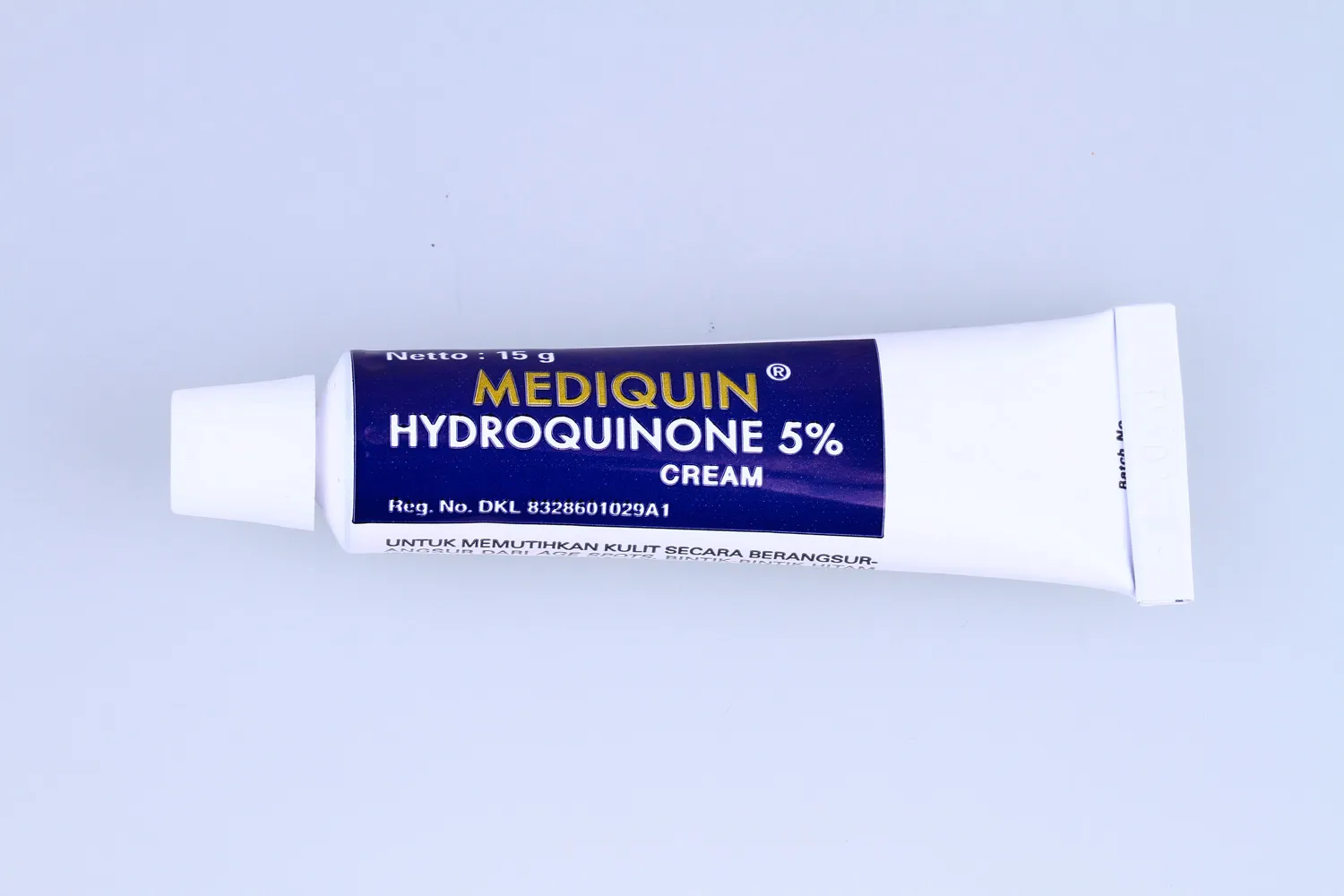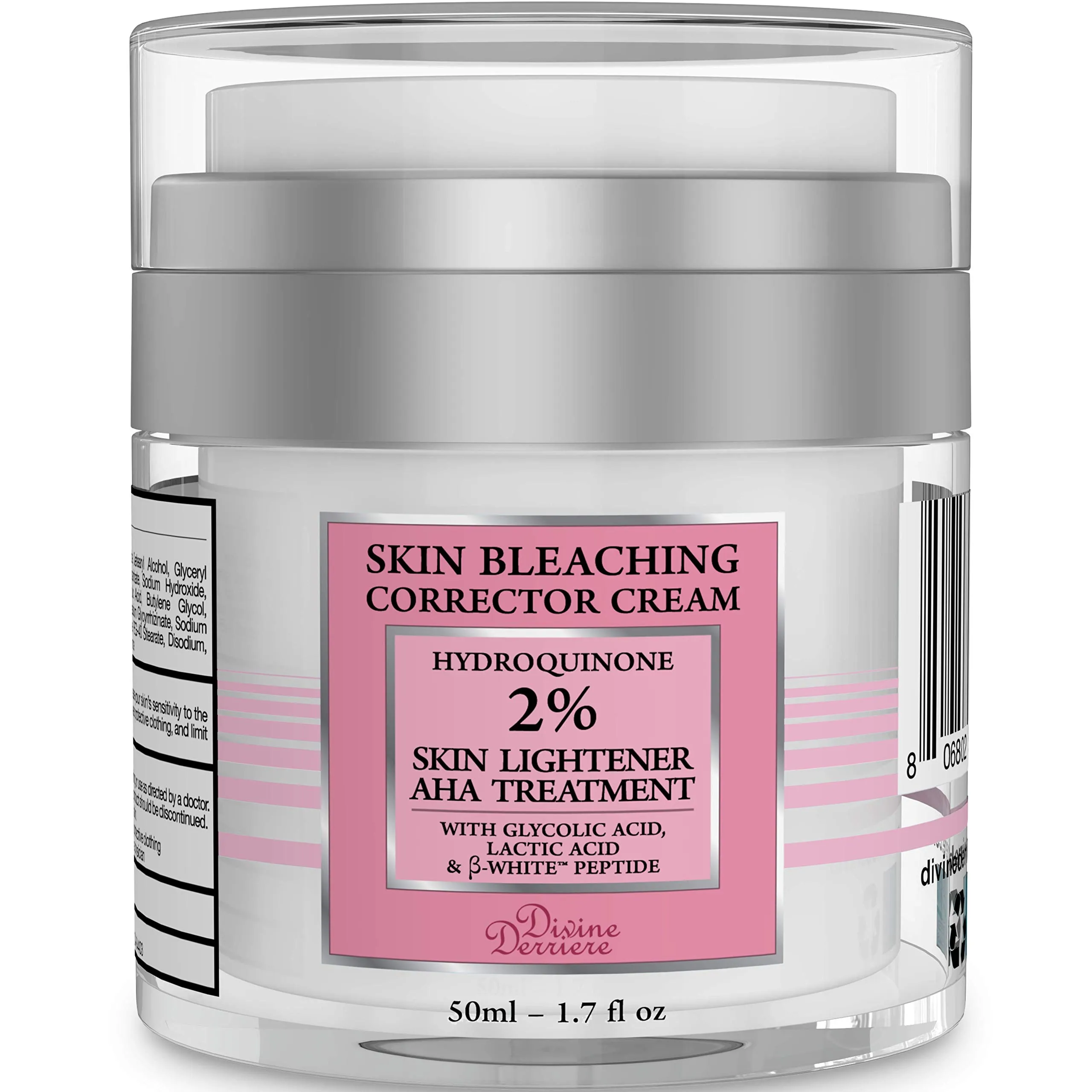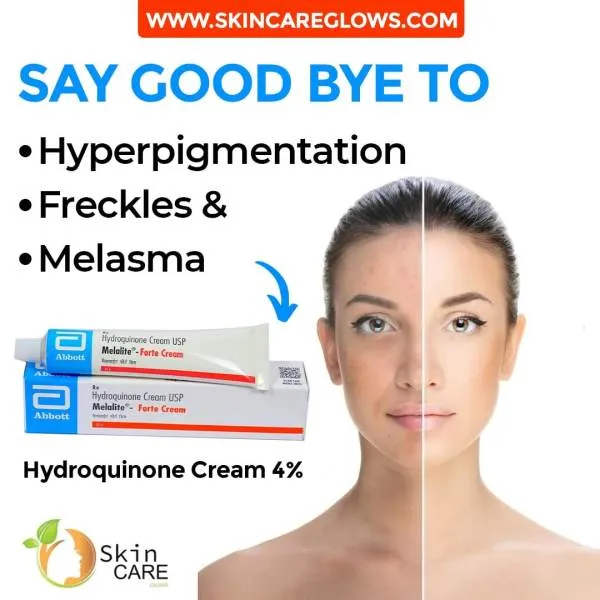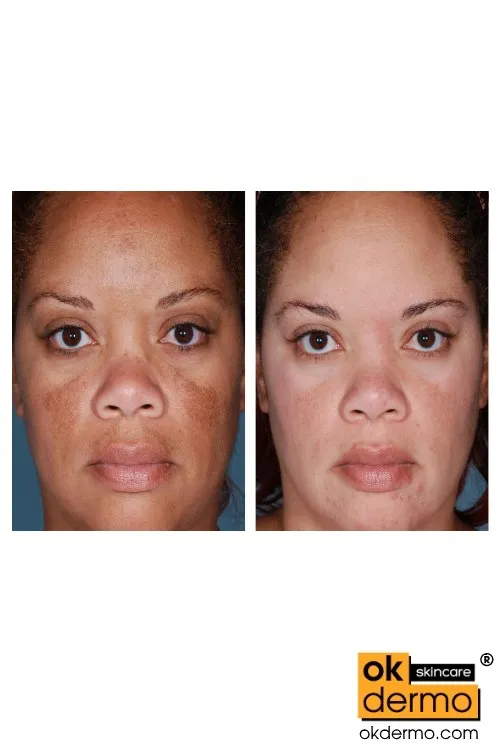What is Hydroquinone and How Does it Work?
Hydroquinone is a topical skin-lightening agent commonly used to reduce the appearance of dark spots, age spots, freckles, and other forms of hyperpigmentation. It works by inhibiting the enzyme tyrosinase, which is essential for the production of melanin, the pigment responsible for skin and hair color. By reducing melanin production, hydroquinone helps to lighten the affected areas, leading to a more even skin tone. This process makes hydroquinone a popular choice for those seeking to address uneven skin pigmentation issues. It’s crucial to understand its mechanism of action to appreciate its role in skin whitening treatments.
Hydroquinone as a Skin Whitening Agent
Hydroquinone is widely recognized as a potent skin whitening agent. Its ability to suppress melanin production makes it effective in treating various skin discoloration issues. It is particularly useful for addressing post-inflammatory hyperpigmentation (PIH), which can occur after acne breakouts or other skin injuries. Hydroquinone’s effectiveness has led to its widespread use in dermatology and cosmetic treatments globally. However, due to its strength, it’s often used under medical supervision. Its role is to effectively lighten skin, requiring careful application and monitoring to minimize potential side effects and maximize benefits.
Benefits of Using Hydroquinone Skin Whitening Cream

The primary benefit of hydroquinone skin whitening cream is its ability to reduce dark spots and even out skin tone. It can effectively lighten areas affected by melasma, freckles, and age spots, leading to a more radiant complexion. Beyond cosmetic improvements, using hydroquinone can boost self-esteem and confidence. It is especially beneficial for individuals dealing with hyperpigmentation caused by sun damage or hormonal changes. The cream offers noticeable results for many users, making it a favored choice in skincare routines aimed at achieving a brighter, more uniform appearance.
Understanding Hydroquinone Skin Whitening Cream
Hydroquinone skin whitening cream is available in different concentrations, typically ranging from 2% to 4% in over-the-counter and prescription formulations. The percentage of hydroquinone determines the cream’s strength and effectiveness, as well as the potential for side effects. The cream comes in various formulations, including creams, gels, and lotions, allowing for different skin types and preferences. Knowing the concentration and form of the product is crucial for selecting the right treatment and using it safely and effectively. This ensures that the cream is appropriate for individual skin needs.
Types of Hydroquinone Creams and Their Strengths
Hydroquinone creams are available in a range of strengths, with 2% being common in over-the-counter products and 4% often requiring a prescription. The choice of concentration depends on the severity of the skin discoloration and individual skin sensitivity. Prescription-strength creams are typically more potent and are intended for use under medical supervision. Different types of creams can be formulated with additional ingredients like tretinoin or corticosteroids, to enhance effectiveness or reduce irritation. Understanding the different strengths and formulations enables users to choose the most appropriate option and achieve optimal results while minimizing risks.
Over-the-Counter vs. Prescription Hydroquinone Creams

Over-the-counter hydroquinone creams usually contain 2% hydroquinone, providing a milder treatment option for less severe skin discoloration issues. These creams are accessible without a prescription and can be a good starting point for those new to hydroquinone. Prescription hydroquinone creams, typically at 4% concentration, offer a stronger effect and are prescribed by a dermatologist. These creams often include additional ingredients like tretinoin, which helps to enhance the skin’s absorption of hydroquinone and accelerate results. The choice depends on the severity of the condition and a healthcare provider’s recommendation, emphasizing the need for professional guidance when using higher concentrations.
How to Properly Apply Hydroquinone Cream
Before applying hydroquinone cream, it’s essential to clean and dry the skin thoroughly. Apply a thin layer of the cream to the affected areas only, avoiding the surrounding healthy skin. Gently rub the cream into the skin until it is absorbed. Proper application ensures the product effectively targets the areas needing treatment. It’s crucial to follow the directions provided by a dermatologist or the product label carefully. Incorrect application can reduce effectiveness and increase the likelihood of side effects, underscoring the importance of precision in the application process.
Step-by-Step Guide to Using Hydroquinone Cream
Start by washing your face with a gentle cleanser and patting it dry. Next, apply a small amount of hydroquinone cream to the affected areas using a fingertip. Be careful not to over-apply or spread the cream onto unaffected skin. It is important to avoid the eyes, nose, and mouth. After application, wait for the cream to be fully absorbed. Follow up with a moisturizer, especially if your skin feels dry. The step-by-step approach helps ensure that the cream is applied correctly, maximizing its benefits while minimizing risks, providing clarity in the skincare process.
Best Practices for Hydroquinone Application

Use hydroquinone cream only as directed, typically once or twice a day. Apply sunscreen with an SPF of 30 or higher every morning to protect your skin from sun damage, which can worsen hyperpigmentation. Avoid using other irritating skincare products, such as harsh exfoliants or alcohol-based toners, simultaneously. Perform a patch test before full application to check for any allergic reactions. These best practices help improve the treatment’s efficacy, while minimizing the potential side effects, to enhance the overall results and promote healthy skin.
Potential Side Effects of Hydroquinone Cream
Common side effects of hydroquinone cream include mild skin irritation, redness, dryness, and itching. More severe reactions, such as ochronosis (a bluish-black discoloration of the skin) or allergic reactions, are rare but possible. Discontinue use and consult a dermatologist if you experience severe side effects or if the condition worsens. The side effects can vary based on the concentration and individual sensitivity. Being aware of these potential reactions helps users take appropriate action to minimize risks and ensure the safety of the treatment.
Common Side Effects and How to Manage Them
Mild irritation, redness, or dryness can often be managed by using a gentle, fragrance-free moisturizer. Applying the cream less frequently, like once a day instead of twice, may also help reduce irritation. If itching is present, avoid scratching the area and use a cool compress for relief. Always consult a dermatologist if side effects persist or worsen. These management strategies help to balance the benefits of hydroquinone with skin comfort, allowing users to continue the treatment with minimal discomfort, ultimately, resulting in better treatment outcomes.
Precautions and Contraindications

Avoid using hydroquinone cream on broken or inflamed skin. Do not use it near the eyes, mouth, or other mucous membranes. Pregnant or breastfeeding women should consult their doctor before using hydroquinone. Prolonged use of hydroquinone can lead to ochronosis, so it’s important to adhere to the recommended treatment duration and follow-up with a dermatologist regularly. Adhering to these precautions ensures user safety and helps prevent the unwanted side effects, which supports an effective and healthy skin whitening process.
Who Should Avoid Hydroquinone Cream?
Individuals with sensitive skin or those who are prone to allergic reactions should exercise caution when using hydroquinone cream. Pregnant or breastfeeding women should avoid it unless advised otherwise by a healthcare provider. Those with a history of ochronosis should not use hydroquinone. People with certain medical conditions might also need to avoid it. It is always best to consult with a dermatologist before use to ensure it’s appropriate for you.
Effectiveness of Hydroquinone for Skin Whitening
Hydroquinone is generally considered an effective treatment for skin whitening, especially when addressing melasma, age spots, and post-inflammatory hyperpigmentation. The effectiveness can vary based on the concentration of hydroquinone used, the individual’s skin type, and the severity of the skin condition. Consistent use, combined with sun protection, generally yields visible results within a few weeks or months. Patient experiences highlight its efficacy in achieving a more even skin tone and reducing the appearance of dark spots. Hydroquinone’s success as a skin whitening agent underscores its role in cosmetic dermatology.
How Long Does it Take to See Results?

The time it takes to see results with hydroquinone cream varies depending on the individual’s skin type, the concentration of hydroquinone used, and the severity of the pigmentation. Generally, visible improvements can be noticed within 4-8 weeks of consistent use. For more significant changes, it might take several months. Patience and consistency are key. Regular follow-ups with a dermatologist can help monitor progress and adjust the treatment plan if needed. Realistic expectations and a long-term perspective are important, as skin whitening is a process that takes time and ongoing care.
Tips for Maximizing the Effects of Hydroquinone Cream
Use hydroquinone cream as directed, and be consistent with its application. Always apply sunscreen with an SPF of 30 or higher every morning. Avoid sun exposure as much as possible, and wear protective clothing. Combine hydroquinone with other skincare products, such as vitamin C serums or retinoids, under a dermatologist’s guidance. These combined approaches improve the efficacy of the treatment. Sticking to these steps helps to boost the treatment’s effectiveness, leading to the most favorable outcomes, to get desired skin whitening results.
Combining Hydroquinone with Other Skincare Products
Hydroquinone can be combined with other skincare products to enhance its effectiveness. Vitamin C serums can act as an antioxidant, improving skin tone and promoting collagen production, and retinoids help increase cell turnover, which assists in the absorption of hydroquinone. However, always consult with a dermatologist before combining skincare products. Not all products are compatible, and incorrect combinations can lead to skin irritation or reduced efficacy. Combining hydroquinone with the right products can improve results, making the process more effective. Following professional advice ensures proper product usage and maximizes results.
Alternatives to Hydroquinone for Skin Whitening

Several alternatives to hydroquinone are available for skin whitening, including kojic acid, azelaic acid, and vitamin C. Kojic acid is a natural ingredient derived from fungi and is an effective tyrosinase inhibitor. Azelaic acid, commonly used to treat acne and rosacea, can also reduce hyperpigmentation. Vitamin C is a potent antioxidant that can lighten skin and protect against sun damage. Choosing an alternative depends on the individual’s skin type, the severity of their condition, and a dermatologist’s recommendations. These alternatives offer a variety of options for people who seek a milder solution or cannot use hydroquinone.
Other Skin Whitening Options to Consider
Other skin whitening options include chemical peels, laser treatments, and microdermabrasion. Chemical peels use chemical solutions to exfoliate the skin and reduce hyperpigmentation. Laser treatments target melanin to lighten dark spots. Microdermabrasion exfoliates the skin, promoting cell turnover. The choice depends on the individual’s needs, skin type, and the severity of the pigmentation issues. Consider the different methods to find one that suits you best. Always consult with a dermatologist to determine the most suitable treatment option for you.
The Bottom Line on Hydroquinone Skin Whitening Creams
Hydroquinone cream is a potent and effective treatment for skin whitening, especially for hyperpigmentation. It is crucial to use it correctly, following a dermatologist’s guidance, and adhering to all precautions. While hydroquinone can deliver significant results, it’s important to be aware of its potential side effects and use it responsibly. Always consult with a dermatologist to determine if hydroquinone is suitable for your skin type and to create a safe, effective treatment plan. Understanding its strengths and limitations supports informed decisions and improves outcomes. Always prioritize your skin health.
